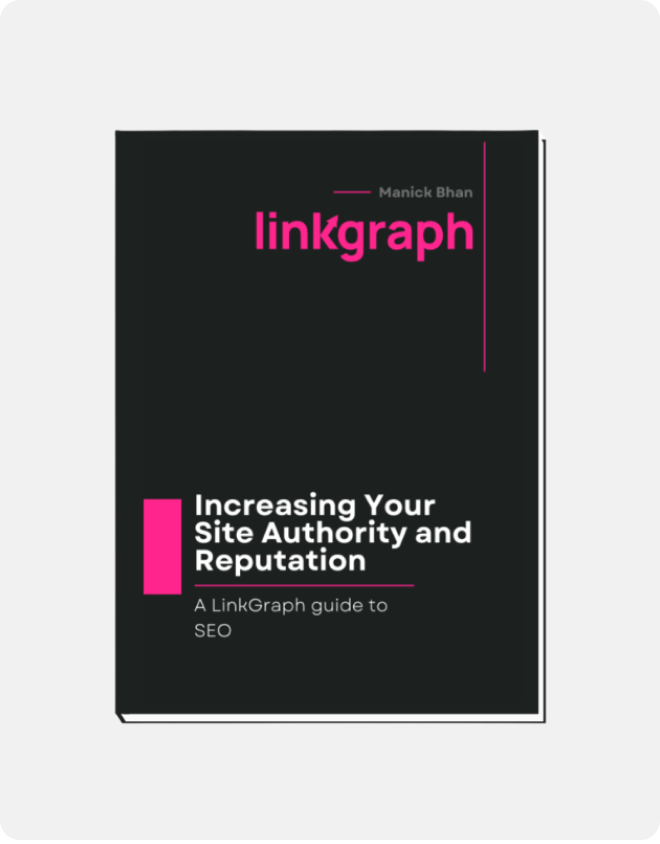Chapter: 01 Introduction to On-Page Optimization
01 Introduction to Negative SEO
SEO is powerful. Digital empires have been built by mastering the SEO arts of content strategy, web development, and-high performance marketing. But SEO is a double edged sword, and can just as easily destroy websites as it can build them up.
In the early era of search optimization, a variety of black-hat techniques once allowed SEOs to dominate the first page of search. These techniques included cloaking, keyword stuffing, spun/artificial content, backlink spam, and anchor text spam.

But as Google’s computational infrastructure became more powerful, their algorithms evolved. The fields of natural language processing and machine learning have exploded with progress over the last decade, and the black-hat SEO methodologies that worked before 2010 have been fully stamped out. Not only do those black-hat strategies no longer work - they will destroy your site's rankings and can prevent a domain from ranking in perpetuity.
Although core algorithm updates or changes to your on-site content can impact your online visibility, a dramatic and unexpected change to your keyword rankings may be the result of what’s happening off-site. It’s possible that your backlink profile may be flooded with toxic backlinks that are intended to hurt your site’s authority, reputation, and get your site off the SERPs. It happens to websites of all sizes, and it’s called a negative SEO attack.
Negative SEO is the use of nefarious SEO tactics with the intention of harming another website’s search engine rankings. At LinkGraph, we’ve seen webmasters fall victim to negative SEO attacks that drastically halted their momentum in organic traffic, conversions, and site visibility. Without quick identification of and response to negative SEO, a website’s reputation with search engines can be permanently harmed.
At LinkGraph, we want webmasters to be able to recognize a negative SEO attack and take the necessary steps to minimize the impact. We know you’ve done the work to build a great site with high-quality content that’s valuable to users and to search engines. You deserve to know how to protect it.
How Does a Negative SEO Attack Work?
Negative SEO is an off-site attack meant to damage a site's reputation or legitimacy in the eyes of search engines. Negative SEO can range from anchor text spam to fake reviews, but all of it is meant to turn the rules of Google's algorithm against you. Here are some common types of negative SEO tactics:

Link farms building hundreds of spammy or toxic backlinks to a site

Fake reviews on third-party platforms or social media sites
Copying content from a site and posting it elsewhere (aka: Scraping)

Fake Link Removal requests sent to webmasters of quality sites
Hacking a site to alter on-page content
Negative SEO is dirty work, but unfortunately, it's fairly inexpensive and easy to perform. When it looks like a site is willingly engaging in black-hat strategies, Google will move quickly to penalize and reduce that site's visibility in search, which is why negative SEO is a technique some use to harm competitors. If negative SEO is not mitigated quickly, the consequences for your website can be long term.
Google once claimed that small sites don’t need to be concerned about Negative SEO, but more negative seo services are appearing on freelance sites like Fiverr and Upwork offering to perform black-hat tactics for cheap. It’s important to recognize that regardless of the size of your business, black-hat seo is a real threat to any website.

Why Someone Might Want to Attack your Site
To defeat your enemy, sometimes you have to think like them. Why would someone want to negatively harm your online presence? Most likely, they have a financial interest in doing so.
Many individuals now offer inexpensive negative seo services and make a living from tanking other sites. Securing quality backlinks takes a lot of time and work, so if you see link building services being advertised on the cheap, it’s most likely that provider is engaging in questionable tactics. Here are some examples of black-hat services offered for next to nothing on Fiverr.
If a competitor was looking for a way to negatively harm your site, it’s fairly easy for them to find someone who will build those bad links on the cheap. (Disclaimer: It’s not possible to secure quality backlinks at this low of a price. If you are trying to build quality backlinks to your site, stay as far away as you can from services like the above.) Here are some reasons why someone might want to attack your site:

CompetitionA competitor may hire someone to negatively harm your rankings
SpammersSome individuals engage in negative SEO for income or just for fun
BlackmailSomeone may attempt to build bad links and then require you to pay money to get the links removed
Self-PromotionPeople often do negative SEO as a way to build up their own site by linking to other sites in unusual ways
Even though Google has updated its algorithm to make sure negative SEO tactics don’t get rewarded with improved rankings, there are still many people out there making a living by engaging in black-hat SEO. Being proactive and alert for these black-hat tactics can help you identify a negative SEO attack early on and minimize any damage to your site.
What Makes a Site Vulnerable to Negative SEO
If you're a webmaster or business owner that offers a great service or product that could take business or traffic away from someone else, then your site is at risk. Although all websites are susceptible to negative SEO, local businesses and startups with less than 300 referring domains are the most vulnerable. The smaller your backlink profile, the more impactful any low-quality or unnatural links will be.
In the early stages of optimization, new sites once used low-quality links to gain growth quickly. Search engine bots now crawl for this and penalize those sites that have too many toxic links. So if you’re a local or small business owner and your link profile does not have thousands of referring domains yet, low-quality links could appear to Google as an effort to artificially manipulate your search ranks and growth. Some spammy techniques we have observed can provide modest ranking improvements for a month or two, but Google’s anti-spam algorithms are sophisticated enough to see straight through link spam.
Although large websites with thousands of quality links, good brand reputation, and a well-established link building strategy are less likely to feel the negative impacts of an seo attack, even relatively established sites without sufficient trust signals are still vulnerable.
Ultimately, a site owner that fails to pay close attention to their backlink profile presents the biggest risk. Without regular monitoring, webmasters leave time for those unnatural links to accumulate and cause permanent damage.
02 Everything you Need to Know about Backlinks
Backlinks are hyperlinks to your website from other sites. They serve as “votes,” or references to search engines about your site’s value and authority. Backlinks are a Google ranking factor, and they are valuable to your site when they come from trustworthy sites with a high domain authority and contextual relevance to your site’s content.
For example, if your site sells software, high-quality backlinks will come from sites that feature or publish content that has application to your software service.But not all backlinks are good. Toxic links can come from untrustworthy sites with low domain authority, from sites that are irrelevant to your content, or have a number of other characteristics that make them disadvantageous to your link profile.

What Makes a High-Quality Backlink?
Domain Authority is the most well-known SEO metric used to measure the reputation of a site. But domain authority alone does not make for a quality link. Google measures the value of a link in different ways, and links that meet more of these standards are better situated to appeal to search engine bots and to last for the long-term.
Some of the criteria Google uses to value links include:
- Domain Authority of the linking site
- User and social engagement
- PageRank of the linking page
- Word count of the linking content
- Site traffic of the linking site
- Contextual links with topical relevance
- Anchor text relevance and diversity
- Links that appear in-content (vs. images, guest post attribution, etc.)
Meeting all of these quality standards takes work, and it’s going to cost you a lot more than $5 on Fiverr.
Securing backlinks that don’t meet these standards though is easy. The overwhelming majority of content on the internet is low quality and sees no traffic from Google, and someone who wants to see your backlink profile harmed has a wide variety of poor performing, low-quality web pages to choose from.

A Little About Anchor
Text Diversity
Anchor text is the visible, clickable text in an HTML hyperlink. Anchor text can provide hints about link quality, as most reputable webmasters will use relevant anchor text when organically linking to your site.
There are a variety of anchor text types that webmasters may use, and a diverse mixture of anchor text communicates to Google that your site is growing in reputation without link building manipulation or black-hat outreach.
In the wild, most websites have 70%+ branded anchor text, with the remaining 30% a diverse array of different anchor text, from exact match, to generic, to naked urls. Typically, anchor text that contains exact match high CPC keywords occurs very seldom (<1%). So having a large amount of inbound links with exact match anchor text is a signal to Google that there is something unnatural about a site’s backlink profile.
Because search engines closely evaluate anchor text, a new link with unusual anchor text can be your first hint to whether the linking site has ominous intentions. Not all low-quality backlinks are the result of negative SEO, but many negative SEO attackers will use anchor text that is unnatural, irrelevant, or even explicit, all with the intention that Google will penalize the linked site as a result.
How to Identify Toxic Backlinks
Backlinks that come from untrustworthy, spammy sites or web pages that do not meet Google’s quality signals are considered low-quality or “toxic.”
In the early stages of your website, every backlink has a larger impact on your backlink profile (and subsequent keyword rankings). Ridding your site of toxic backlinks is an important part of your website maintenance. You can utilize the below tools to analyze bad links that may harm your site’s reputation or could be the product of negative SEO.
LinkGraph’s Backlink Analyzer
LinkGraph’s backlink analyzer allows you to check domain and page-level metric information for target urls. Our software will flag any risky sites that are linking to yours and provide you with the disavow links to submit to Google Search Console.
Our tool also enables you to view granular data link data from each domain and will provide detailed reporting about the links occupying your profile right now. Our Backlink Analyzer and Bulk DA checker are both available in your LinkGraph customer dashboard.
Google Search Console
Google Search Console (GSC) is another tool to begin your quest to identify and remove toxic links. This free service provides a lot of information about your website, like the highest-traffic queries and pages, referring domains, mobile site performance, and your backlinks. This is also where you will eventually submit necessary disavow files.
Here are the steps for adding your site to the Google Search Console (GSC):
Though Google will start tracking site data as soon as you add it to GSC, you need to verify your site.
You can use one of the following ways to verify:

Upload a verification HTML file provided by GSC to a location on your website

Sign in to your domain registrar and verify your site directly from GSC. You can also add a DNS, TXT, or CNAME record
Add a <meta> tag to the <HEAD> section of the HTML code of a specific site page

Copy the Google Analytics tracking code that you use on your site

Copy the Google Tag Manager container snippet code associated with your site
As you begin to utilize these tools to monitor your backlink profile, keep in mind that not all bad backlinks are nefarious. Occasionally, low-quality sites will link to yours with the intent of guiding their users to useful content. Also, the disavow feature is considered an advanced feature. If you disavow the wrong links, or too many links, you could end up negatively impacting your own SEO.
If you are not quite sure whether or not a site is risky, consult an SEO expert. They can help you identify which backlinks are low-quality or toxic enough that they warrant removal. Also, it is better to submit disavow files in batches rather than one-at-a-time. Google wants webmasters to use the disavow tool sparingly and will flag your site if you are disavowing links too often.

The Difference Between White-Hat and Black-Hat Link Building
Link building has a long, complicated history that involves webmasters outwitting algorithms and Google clapping back with more refined ranking factors and quality signals. In the early days of search engine optimization, it didn’t matter what your anchor text was or who the link came from. As long as you had links from other sites, Google rewarded you with more keyword rankings and better search results.
Luckily, those days are long gone. As the shape of the internet has changed, Google has become far more sophisticated, and these older strategies are what end up harming sites, not benefiting them. Google only wants to show its users quality content from reputable web pages, and it will keep getting better at rewarding sites for quality signals on- and off-site.
But link building can be done effectively and in white-hat ways. At LinkGraph, we execute link building and digital PR campaigns for our clients, but they are quality-driven, and appear in original pieces of content with relevant anchor text on web sites with active user engagement and high domain authority. This type of link building is more expensive and requires more work and more time, but it is safe in the eyes of Google. The rewards for your site are improved keyword rankings, increased organic traffic, and tangible brand visibility and growth.
Nothing good in SEO is automated or cheap. A lot of people who still have these older sites, or who are still employing these cheaper link building options, end up harming their ability to ever rank in the future. Because it’s often easier to take down another site than build up your own backlink profile with quality links, some choose the dark side.
Negative SEO will always be an option available to those webmasters who want the easy way out. Knowing the signs of the common Negative SEO strategies will help you prevent your site from ever becoming victim.

03 How to Identify
A Negative SEO Attack
When your backlink profile begins to see irregularities, or the low-quality backlinks you do receive start to form patterns or similarities, these are tell-tale signs that a negative seo attack might be occurring. Some webmasters are so desperate to get backlinks, they don’t analyze the quality of their linking sites closely enough, and they end up accumulating toxic backlinks faster than they can disavow them.
This is a nightmare scenario that we don’t wish upon anyone, but that we’ve helped many webmasters recover from. Although Negative SEO tactics may occur more subtly, we’ve noticed that the majority of our clients who experience Negative SEO receive a large influx of low-quality, toxic links that all seemingly register at once.
Although there is no way to prevent a negative SEO attack, being on the lookout by monitoring your backlink profile is a preventative strategy that will equip you to take quick, decisive action before the negative implications take root.

Do you currently know the sites that are providing you with the highest number of links? What is the most common anchor text other webmasters are using to link to your site? What exact match anchor text variations does your backlink profile currently have?
If you can’t answer these questions, then you’re not monitoring your backlink profile closely enough. The only way you can identify the patterns that signify negative SEO is by knowing what a natural, healthy backlink profile for your site looks like. We recommend a quarterly audit to make sure your site isn’t keeping company with any questionable web properties.

To perform a backlink profile audit, check each site on your list of backlinks in Google Search Console and “grade” them on a spectrum from “good” to “toxic.” You should compare that data with the backlinks that LinkGraph’s free Backlink Analyzer has marked as risky. Then, you can do the work of investigating those linking sites more closely.
Google Webmaster Guidelines offers useful insight into how Google views websites in their ranking process and what constitutes acceptable web practices vs. what will cause link penalties. Understanding this information allows you to make educated judgements about the quality of your backlinks, and will likely help you pinpoint the worst spam links.
Most Common Types of Negative SEO
Negative SEO can flood your backlink profile with toxic backlinks from a variety of sources, but here are some of the most common irregularities and patterns our clients have seen that have signified negative SEO efforts were actively occurring.
Unmoderated sites that allow unregistered subscribers to post comments are places where negative SEOers regularly go to cause damage. This is known as “Comment spam,” and can occur on popular domains like blogspot.com or wordpress.com. The comments usually have no relevance to the topic of the blog post and clearly only have the intention of inserting a link from your site.
There are software tools that scan the internet just for websites that allow commenting and have do-follow outlinks, and negative black-hat SEOs will utilize them to find stealth places to link to your site. Google will crawl these comment spam backlinks and see them as low quality, particularly when the blog or forum has no topical relevance to yours, includes irrelevant anchor text, or is an older blog post that has not been updated for a long time.
Irrelevant anchor text can sometimes occur if a linking site is less familiar or concerned about SEO, but unnatural, explicit anchor text is your sign that someone has bad intentions by linking to you. If you see a sudden influx of links from different referring domains that all happen to use the same anchor text, the chances of that occurring naturally is slim to none.
Too many exact-match anchor text is also problematic. Google bots also crawl the anchor text of your backlinks to determine your keyword rankings, and a bunch of links using anchor text with an exact match to the keyword you’re trying to rank for will look like manipulation to search engines.
Most often, a negative SEO attack will occur quickly, over the course of 1-2 days. One bad link won’t harm your site too much, but a large influx of bad links that transform a healthy backlink profile into 25% spam can cause significant damage. If you do not have any sort of active link building campaign in place, any sudden accumulation of links should get your antennas up to start identifying any problematic patterns in those links.
Another age-old black-hat strategy is hiding backlinks in image files. These links are invisible on the front-end but are seen in the HTML source code. Although there are white-hat ways to do image link building, hiding links in images on irrelevant, low-quality sites is a classic black-hat technique. Google does crawl those images and will consider the hidden link when it evaluates your backlink profile.
Plugins on Wordpress and other website building platforms can contain code to insert links on certain pages of your website. For this reason, It’s generally not a good idea to install and activate Wordpress plugins that aren’t well known or haven’t been thoroughly reviewed.
Free themes or site templates can often contain embedded malware, which when activated will inject spammy links into your site’s pages or redirect certain users to explicit 3rd party sites. These are often ripped from popular paid themes, modified to include additional malware, and then made available for free download.
Other Common Types of Negative SEO not Visible in your Backlink Profile
Although content scraping will not be visible in your backlink profile, it is a common negative SEO tactic used to harm sites. Content scraping is when someone steals content from your site and publishes it across the internet. Google does not like duplicate content, and will penalize sites who appear to be republishing content or using content that’s not original.
Some sites scrape publications or ingest RSS feeds from other publications and syndicate them. Inadvertently, they can contribute to Negative SEO.
Similarly, negative reviews will not be visible in your backlink profile, but they should be regularly monitored. Reviews are a trust signal, so someone leaving a wave of negative reviews on platforms like Google My Business, TrustPilot, Yelp, and other platforms that Google ingests review data from can also negatively influence your rankings.
Someone on your team should be regularly monitoring your GMB listing and third party platforms to respond to negative reviews shortly after they are posted. If you believe the reviews are fake, reach out to the third-party platform to see if those fake reviews can be removed.
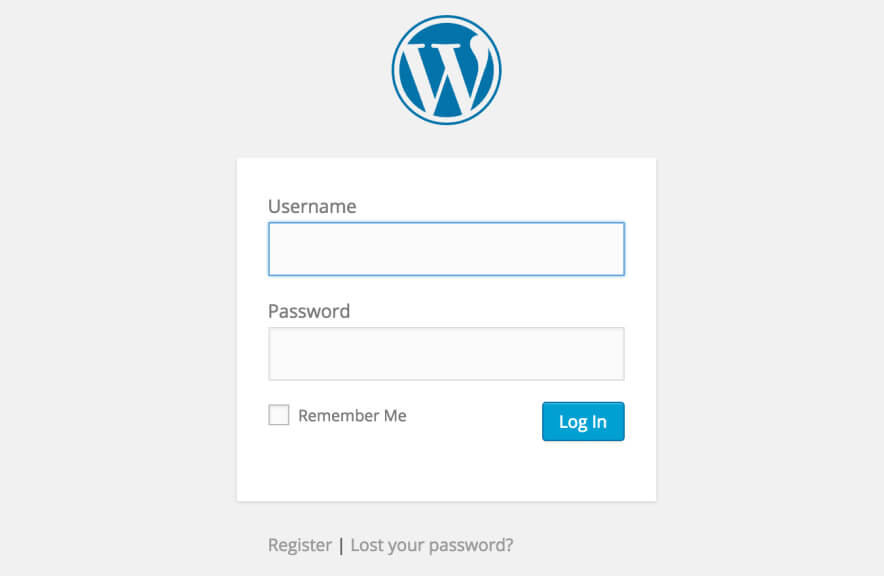
After you have audited your backlink profile and identified a pattern that resembles negative SEO, make sure you talk to your vendors, employees, freelancers or anyone who has access to your site.
Is someone at your company working with a vendor that you don’t know about? Are you working with freelancers? If so, stop. Although you cannot prevent negative SEO from occurring, you want to do everything you can to make sure those links stop coming in.
04 Case Study: Appliance Repair Company Experiences Negative SEO attack
At LinkGraph, we have helped clients identify and mitigate negative SEO attacks quickly to avoid permanent damage to their online visibility and organic growth. To give you a more concrete idea of the investigative work that surrounds the process of mitigating negative SEO, take a look at some of the below data signals that helped us recognize a negative SEO attack and take subsequent action.

Identification: Keyword Rankings Drop
In the below chart you’ll see that our client’s keyword rankings experienced a sudden drop. Up until April 2020, our client had been experiencing steady growth. They had not made any changes to their on-page content, they had no active link building campaigns with other vendors, and there were no recent Google algorithm updates to account for the abrupt change.

Investigation: Multiple Links from blogspot sites
This sounded the alarms for us to take a closer look at the client’s backlink profile. Over the course of a few days, they had received a sudden influx of links, the majority of which came from blogspot.com domains with low domain ratings and organic traffic.

A closer look at these backlinks showed that our client was being victimized with comment spam. The new backlinks were all appearing in the comment sections and appeared to be posted by different users. Although the blogspot url seemed to have some relevance to our client’s appliance repair industry, the blog was clearly designed as a place to drop these links to make it appear as if our client was attempting to manipulate their own rankings.
Below is an example of what comment spam looks like in practice.


Remediation: Disavow to Discount Links
Over the course of a month, these low-quality, comment spam links continued to pop-up in our client’s backlink profile. We disavowed between 125-150 links, which for a small business, was a significant percentage of their entire backlink profile. Because we were already familiar with what a healthy backlink profile for this client looked like, we were able to recognize the irregularities fairly quickly and take the necessary steps to minimize the damage.

05 How to Perform Negative SEO Remediation
Unfortunately, there is no way to stop a negative SEO attack from happening, as webmasters have little control of where their links come from. Continuously monitoring your backlink profile for risky sites and spammy links though can help you take actions quickly before it becomes out of control.
If someone is smart enough to run a successful negative SEO attack, they are probably smart enough to avoid detection. The chances of you finding the person who did it, or finding the person who hired a person to do it, is slim to none. Instead of worrying about assigning blame, try to figure out how to fix the problem before it escalates into something worse.
Thankfully, there are many concrete ways that you can mitigate negative SEO, and if you do so immediately, you can minimize the damage caused to your rankings and organic traffic and repair your reputation with Google rather quickly.
First, Decide if You Need the Help of a Professional
If you don’t know what you’re doing when it comes to mitigating negative SEO, you can cause irreparable damage to your site if you disavow the wrong backlinks or those that actually add value.
Most small- to medium-sized businesses don’t have a dedicated SEO or technical seo person. So before attempting to recover from a Negative SEO attack, you need to have an honest conversation about whether you are qualified to resolve the issue, and whether you can do so quickly without seeking out the guidance of a professional.
If you’re trying to eyeball it and not using any software, you may mistake which backlinks bring your site value and which are actually problematic. If you’re not sure, consider scheduling a call with one of our SEO experts to get a full scope of the problem and see what your best next steps are.
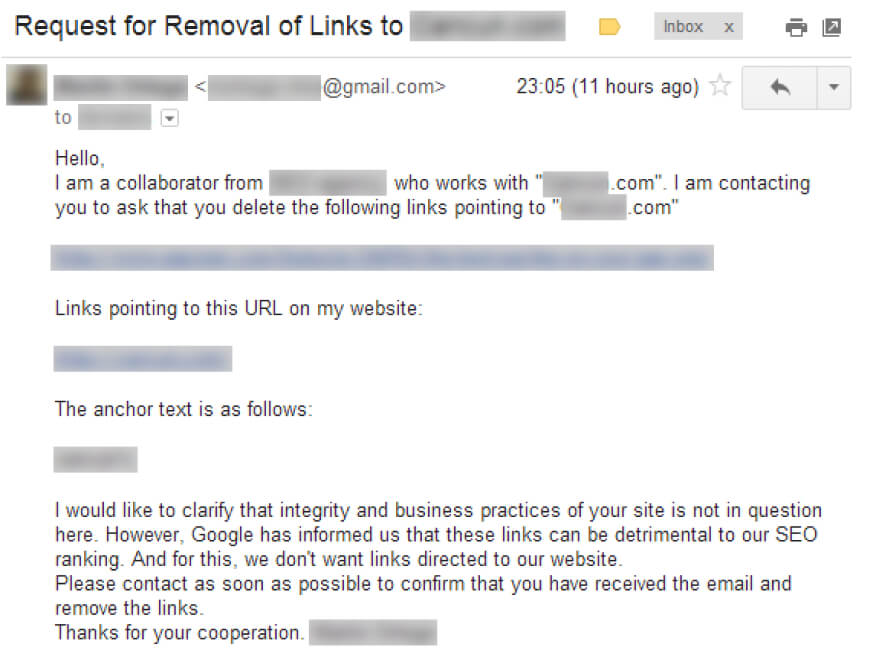
Although this strategy doesn’t always work, it is the first step you should take. The disavow tool (option 2), should only be used only after all other efforts have been made to have a bad link removed.
Find the contact details of the website owner and submit a polite request for the link to be removed. For obscure blogs like those exemplified in our client example, this may be difficult or close to impossible. If the link is the product of negative SEO, the webmaster may require you to pay for the link to be removed. Depending on your budget or the severity of the bad link, you can choose whether you want to give in.
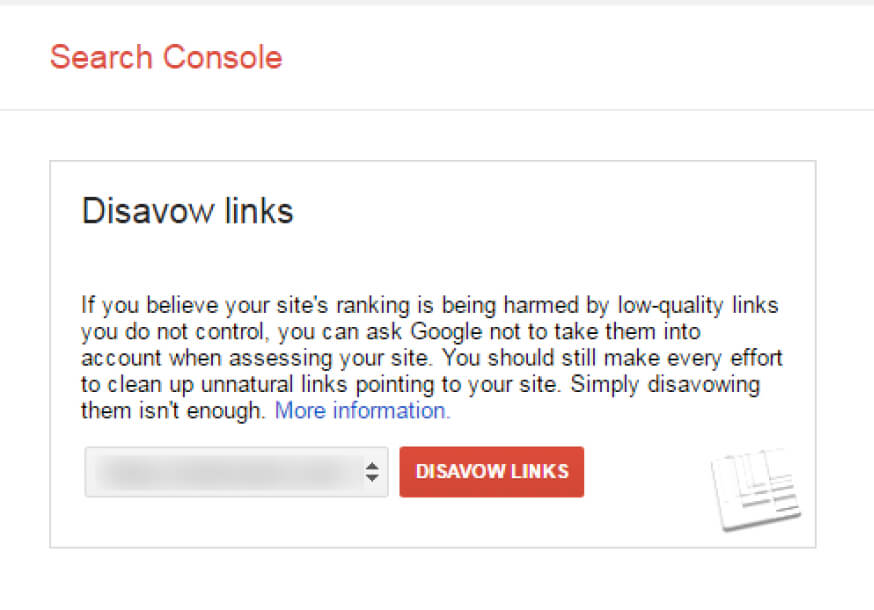
Thankfully in 2012, Google debuted it's Disavow tool to provide site owners a way to combat some of these negative SEO tactics. Google recognized that webmasters don't have control of who chooses to build links to their sites and needed to provide webmasters a way to be proactive and guard their site against these nefarious techniques.
The disavow feature lets you upload a list of the links you want removed from your site to Google as a text file. Although a disavow file does not get those backlinks removed, it tells Google not to count them in their ranking algorithms. They will still see that you have unnatural links, but they discount a portion of your links and don’t penalize you.
However, disavow is not a complete solution and should only be used when absolutely necessary. Google actually discourages over-reliance on disavow, and abusing the tool can also have consequences. Be selective, and only use the tool when the circumstances really call for it.
For guidance on how to submit a disavow file, review the detailed instructions outlined in Google Search Console. In summary, you will need to assemble your links in a text file and upload that file via the Disavow Tool. We will not break down the steps of submission, as Google has them clearly outlined on their site, but here are a few considerations you should make when choosing which links to disavow.
When putting your disavow file together, you will identify domains, subdomains, or urls that you want Google to ignore links from. It is extremely important that in your negative SEO mediation, you are careful in your selection, as you don’t want to disavow domains where you could potentially earn quality links in the future.
If we revisit our example of our client who experienced comment spam, disavowing the domain “blogspot.com,” entirely could cause drastic harm to their site. They did have some quality links from other blogspot sites that were helping, not harming, their rankings. There are plenty of blogspot sites that are high-quality, with good traffic and a high domain rating. In their case, we disavowed the subdomain to isolate those specific links from comment spam.
If the problem becomes too drastic where you can’t disavow links fast enough, then you can consider disavowing an entire domain. However keep in mind how that might impact your existing quality links or your future link building efforts. Again, consulting an SEO expert to assist you with the Disavow Tool may prevent you from inadvertently performing negative SEO against your own site.
When it comes to using the Disavow Tool, you should iteratively or progressively disavow bad links in small batches so you can monitor the impact. If you have a limited backlink profile and remove 25% of your links because they are all low-quality, that could have significant impacts on your rankings and site authority.
Before uploading a disavow file, make sure you identify whether you have an existing disavow file. If so, you need to append your new list to your existing list, not just replace your previous file with the new file. Remember, it takes about three weeks for Google to process a Disavow file, so take that time to evaluate your site accordingly before disavowing additional links.
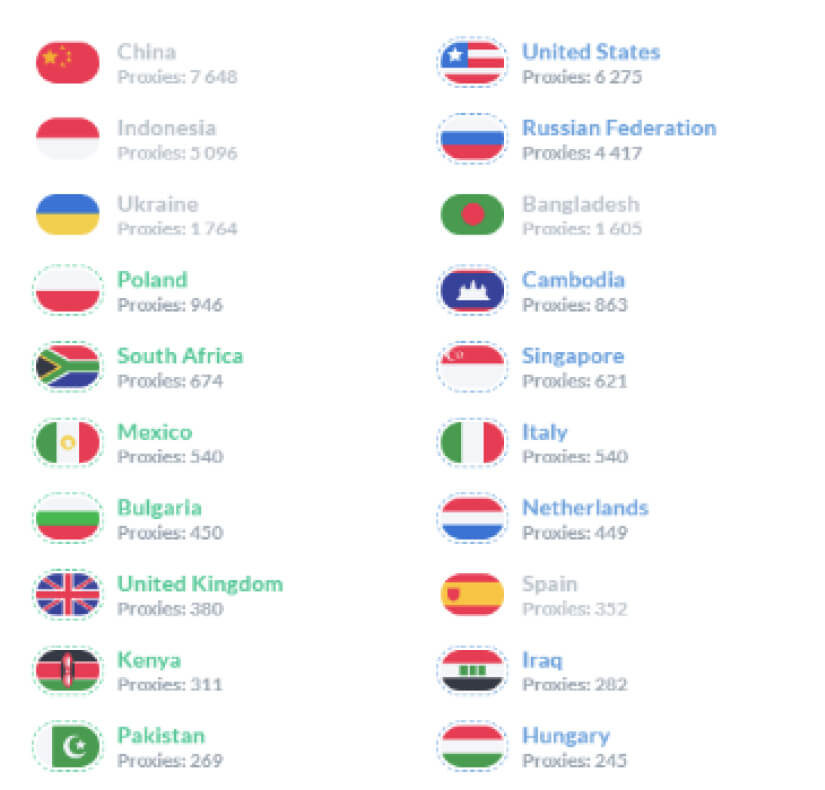
For the more advanced SEOs, look at the referring IPs of your bad links and see if you can notice any patterns. Are all the sites that are magically linking to you all hosted in the Ukraine? Do the various referring domains of your sudden influx of links belong to a network of sites that are all hosted on the same IP?
You can do some more thorough investigation and see if someone is talking about it in a forum or community board. That IP may have already been flagged by other SEOs as problematic and the source of negative SEO attacks for other sites as well. If you can identify the attacker and the hosting provider, you have the right to reach out to the ISP or hosting provider and identify the IP subnets that are originating the spam. If you’re successful, they will deactivate the servers.
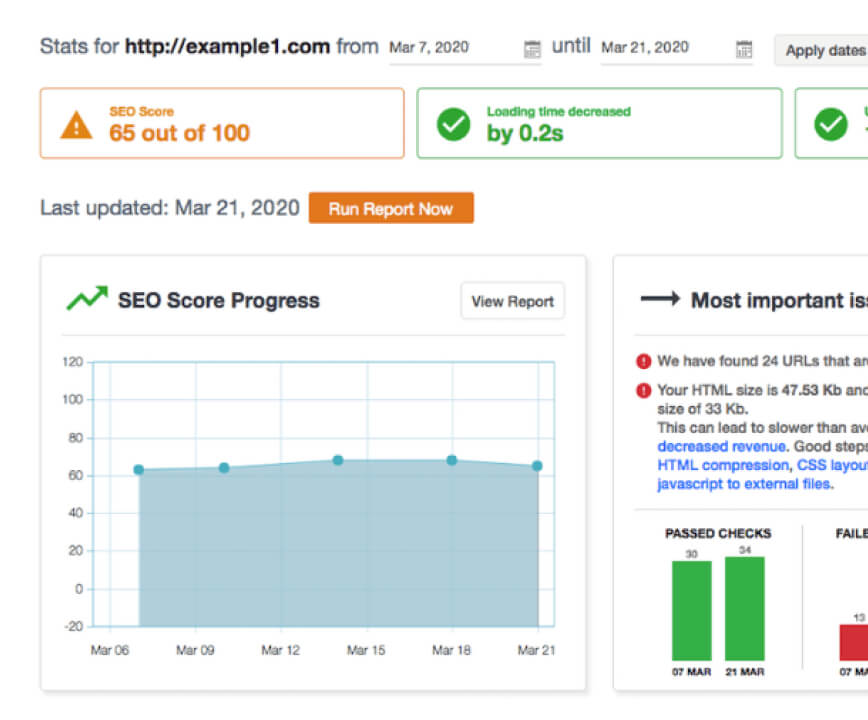
White-hat link building is the best solution to negative SEO because it minimizes the impact and makes your site less vulnerable to an attack. When a site has a robust, healthy backlink profile, those low-quality links don’t make nearly as significant of a dent.
Some people hesitate to do link building because they’ve explored low-quality options or their site has been negatively impacted before from black-hat techniques like the ones we’ve outlined here. But high-quality link acquisition looks nothing like black-hat strategies.
At LinkGraph, our award-winning link building services have helped hundreds of clients grow their keyword rankings, organic traffic, and revenue. We build high authority backlinks through original pieces of content published on sites with strong trust signals. Marquee publications like New York Times and Wall Street Journal are trusted by Google for a reason, and we secure links in-content, contextually relevant links in high domain authority sites like these in just 30-days.
To learn more about how link building can protect you from negative SEO, visit our link building services page or schedule a consultation with one of our SEO specialists.

06 Final Thoughts on Negative SEO Attacks
Regardless of the size, strength, or age or your site, you should always be monitoring your site for toxic links, not just when a rankings drop occurs. Prevention is always the best medicine, and setting your site up for success with quarterly audits and white-hat link building is the ideal scenario for mitigating any future negative SEO attacks.
Software like ours can help you stay on top of your backlink profile easily. Remember to also be monitoring third party forums for those negative SEO strategies that occur on third-party sites, like fake reviews or content scraping.
Now that you have a better idea of some of the common techniques black-hat SEOs use, you should be able to see the warning signs. Like with all things optimization, leveraging data and common sense will help you make smart, strategic decisions in keeping your site in good standing in the eyes of users and search engine crawlers.
Stay vigilant and focused, and you will be prepared to handle any negative SEO with calmness and clarity when or if it occurs.
Stay vigilant and focused, and you will be prepared to handle any negative SEO with calmness and clarity when or if it occurs. If you need help, call one of our account specialists at: 1 (310) 757-8071.











































































